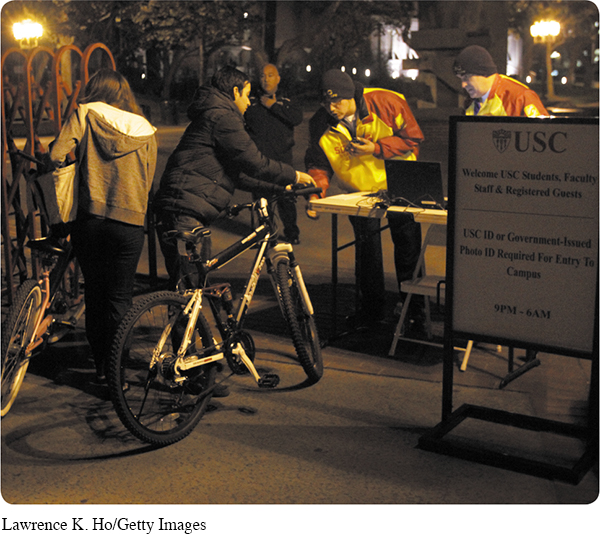Chapter 16: Ethical Arguments
588
See the additional resources for content and reading quizzes for this chapter.

589
AT ISSUE
How Far Should Schools Go to Keep Students Safe?
Unfortunately, it is no longer unusual to read reports of shootings, robberies, muggings, and even murders in schools—
In response to pressure from parents, educators, students, and politicians, many public schools now require students to pass through metal detectors and teachers to lock classroom doors during school hours. Colleges have installed blue-
Not everyone is happy about this emphasis on security, however. Some educators observe that public school buildings now look more like fortresses than places of learning. In addition, faculty members point out that colleges are supposed to promote free thought and that increased security undercuts this freedom by limiting access to campus and sanitizing the college experience. College students balk at having to wait in long lines to get into campus buildings as security guards examine and scan IDs. They also dislike having to register guests in advance and having to accompany them to dorm rooms. Students complain that colleges tell them they are adults but treat them like children.
Later in this chapter, you will be asked to think more about this issue. You will be given several research sources to consider and asked to write an ethical argument discussing how far schools should go to keep students safe.